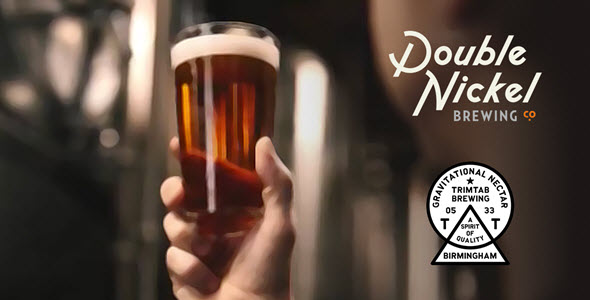By the bioMérieux Connection Editors
The latest episode of the Invisible Sentinel educational webinar series focused on the value of implementing advanced quality procedures to avoid unintended secondary fermentation.
The hour-long webinar featured Paul White, Quality Assurance Director at TrimTab Brewing Company, and Drew Perry, Co-Founder and Head Brewer at Double Nickel Brewing Company. The breweries are inherently different—TrimTab is located in the deep South (Birmingham) and focuses on traditional styles with innovative twists, while Double Nickel hails from the East Coast (Philadelphia) and concentrates on IPAs and fruited sours. Despite these differences, the two organizations share a key enemy, one that all breweries should be aware of: Saccharomyces diastaticus.
S. diastaticus: A Brewer’s Nightmare
Cultured yeasts are essential for beer production. S. diastaticus is a variety of the common top-fermenting brewer’s yeast S. cerevisiae. Some breweries incorporate S. diastaticus yeast intentionally, usually for Belgian Saison style beers, but it can also make its way into the production process inadvertently. S. diastaticus usually only occurs in traces, so it can go undetected for weeks—until it poses a serious problem.
When fermentation is complete, S. diastaticus can become active and may initiate a second fermentation, which can take place even in a bottle or can. The effects of this second fermentation range from minor annoyance to a major headache: turbidity, off-flavor, and increased alcohol content are small consequences that can all pose a big risk to a brewery. The most serious consequence is over-carbonation, which can result in exploding bottles and cans.
“I got the 911 call that we had cans popping left and right. Retailers are mad and distributors are mad,” said Perry about Double Nickel’s disastrous experience with S. diastaticus in 2017. “We didn’t really know what was going on.”
Similarly, TrimTab identified their first S. diastaticus contamination in June of 2020 after experiencing exploding cans and off flavors.
“All of our quality concerns were the same—over-attenuating, exploding cans, unpredictable fermentation; we were getting really low gravities towards the end of fermentation,” said White.
Fighting S. diastaticus with Advanced Quality Procedures
Both Perry and White addressed their S. diastaticus contamination issues by implementing advanced quality assurance procedures at key points within the brewing process, specifically a Polymerase Chain Reaction (PCR) system.
“We’re utilizing the system to verify all of our micro procedures, to make sure [we] can identify and isolate any type of growth that appears to be contaminated,” said White of TrimTab’s quality strategy. “We’re testing all our yeast slurries prior to pitch to make sure we don’t incur [S. diastaticus] to begin with and testing our cans after packaging to make sure we don’t have any surprises in the market with popping cans.”
After receiving inconsistent results from traditional plating methods, the implementation of the PCR system has provided peace-of-mind to the brewers at TrimTab, who have had zero problems with exploding products, off-flavors, or attenuation since implementing their quality control procedures in July of 2020.
Double Nickel’s experience with S. diastaticus was almost devastating, resulting in the brewery closing for 4 to 5 weeks, damaged relationships with distributors, and loss of revenue and beer. White, however, can see the silver lining.
“It forced us to build a strong lab program quickly, and I think our relationships with our distributors are now stronger because of what we all went through together,” he said.
With the help of PCR, Double Nickel’s quality program ensures all new yeast pitches coming into the building and all product leaving the building are negative for S. diastaticus.
Watch On-Demand Webinar to Learn More
The danger of S. diastaticus is enormous—even a small amount of cells in cultured yeast can cause severe damage and has the potential to spoil a brewery’s whole production. Implementing strict quality controls throughout the brewing process can help protect consumers and a brewery’s reputation.
To hear more about how TribTab and Double Nickel have combatted S. diastaticus with sound science, tune into the on-demand webinar using the button below!
Opinions expressed in this article are not necessarily those of bioMerieux, Inc.



